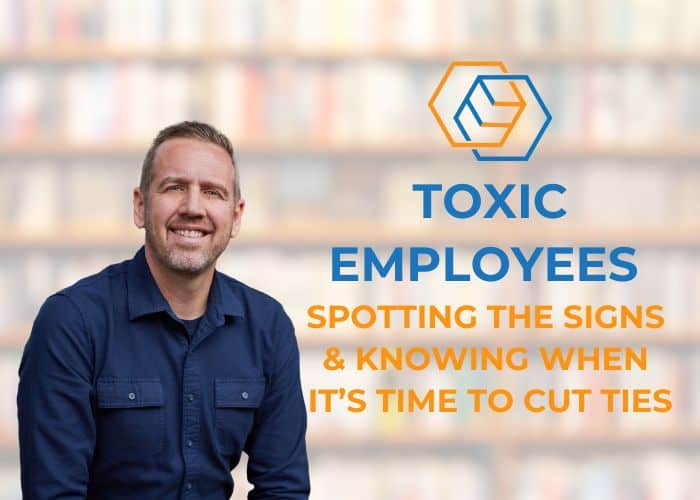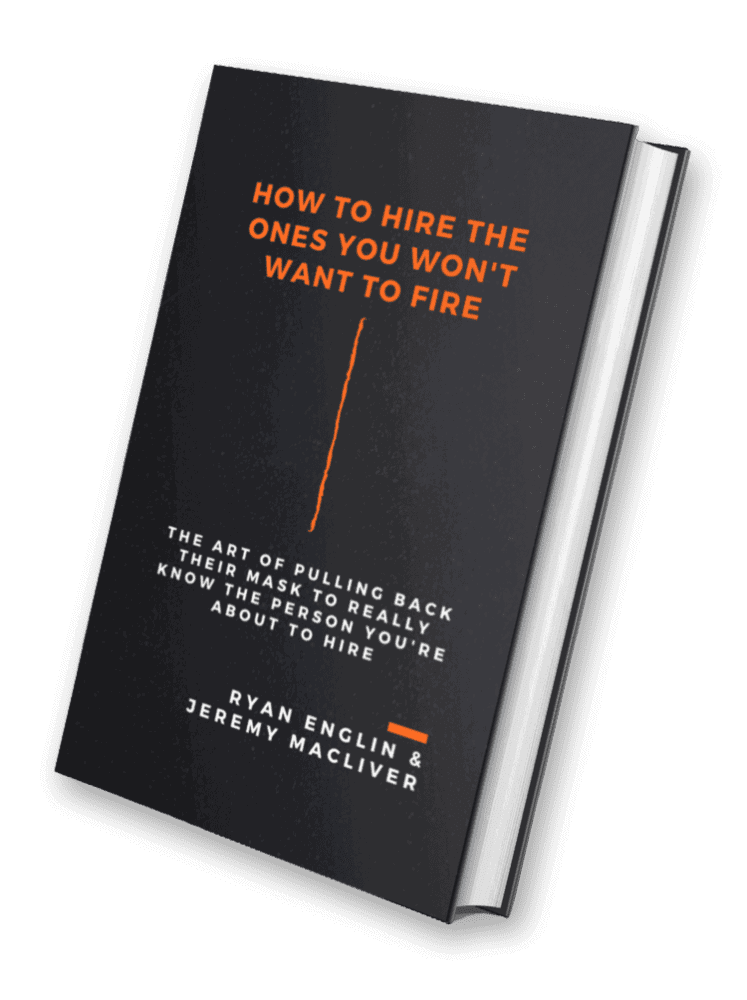Toxic Employees: Spotting the Signs & Knowing When It’s Time to Cut Ties

Warning: The following content is heavy and may be a trigger. The author of this article is not a mental health professional nor a doctor and opinions in this article should not be expressed or implied to be a replacement for qualified medical or mental health treatment or advice.
Have you ever wondered if someone on your team is a toxic employee? If you’re questioning it, the answer is probably yes.
According to the American Psychological Association’s recent Work in America Survey, 19% of workers say their workplace is toxic. That’s nearly 1 in 5 people.
Toxic employees are a barrier to the success of your company, but knowing what to do when you have one is daunting. The first step in determining when it’s time to cut ties with toxic employees is learning how to spot them.
What Is a Toxic Employee?
According to SHRM, toxic employees are people who exhibit “mean behavior, possess a ‘put down’ spirit, and continuously make the effort to disrupt morale.”
Additional signs of a toxic employee include:
- Aggressive language
- Bullying
- Discrimination
- Disrespect
- Excessive complaints about leadership
- Gossip
- Harassment
- Heavily self-centered behavior
- Inappropriate jokes
- Lack of cooperation
- Loose cannon responses
- Negativity about everything
- Quick to be extremely frustrated
- Violent behavior
If you’re feeling uncomfortable with that list, we get it. We’ve been there. We’ve seen what happens.
We understand the impact a toxic employee has on your team, customers, and your personal life. The way toxic employees make you feel follows you (and your team) home.
When Is the Best Time to Terminate Toxic Employees?
As soon as you determine someone is toxic, it’s time to begin the process to terminate them. But that’s easier said than done.
Often, employers feel trapped or nervous to fire toxic employees. They usually have an overinflated sense of importance due to their value to the company. They’re also flighty and unpredictable; leaving everyone scared to make waves.
Additionally, toxic employees are usually decent performers. If you’re short staffed, it can be tempting to keep them and hope for the best. After all, they get the work done. They just bring everyone down in the process.
Trapped by Too Much Access
Many small business owners feel like they’re held hostage by toxic employees. The team is afraid of this person. They start calling in sick to avoid being around them. The boss worries good people will quit if they don’t take action, but also fears the toxic person will take down the company if they’re let go.
Several years ago, a client suspected their controller was stealing from the company. Despite the extreme nature of this violation, they were afraid to fire her because she had unlimited access to everything from keycards to accounts.
After many coaching conversations, the owner slowly started to rescind the employee’s access. Once the toxic employee was terminated, the boss was able to start rebuilding morale and fix the mess the controller left. While it was scary to terminate someone with so much knowledge about the company, it was necessary for the company to begin to thrive again.
How to Terminate Toxic Employees
You know you need to take action as soon as possible, but the question is how?!
Unless people are in immediate physical danger, it’s best to start with a conversation. Privately sit down with your toxic employee and let them know you don’t think they’re a good part of the team anymore.
When we’ve suggested this to other business leaders, the response is usually: no way – they’re going to explode upon hearing that statement and make things worse.
That’s exactly how toxic people make their employer feel trapped. It may be true – they may fly off the handle – but that doesn’t mean you should avoid hard discussions.
Step 1: Have a Direct Conversation
Start by asking what’s going on with your employee. Is there something causing this new behavior? Sometimes people are toxic because they think their boss doesn’t care about them or they’re dealing with something serious in their personal life. Sometimes they’re just not the right culture fit anymore and they’re self-selecting out of the company.
Most likely, you didn’t hire someone who was toxic. You probably would have terminated them during their probationary period if they were acting this way. By getting to the bottom of the toxicity, you can decide if this is something that can be worked on or if it’s time to terminate.
Step 2: Put a Plan Together for How to Change the Behavior
You can start by putting the employee on a performance improvement plan (PIP). Let them know exactly what needs to happen to perform well and include any attitude changes that are necessary. Be clear that if the changes don’t happen, you’ll have to terminate them. Make sure you document everything in writing.
During the PIP, leadership needs to continue to support and encourage the toxic employee. Sometimes toxicity comes from misunderstandings. Take time to make sure you’re on the same page.
Then it’s time to wait and see what happens. Maybe they’ll change. If they don’t, it’s time to terminate.
Warning: Proceed With Caution
Be careful when you terminate toxic employees.
After weeks or months or even years of working with someone toxic, people are exhausted and burnt out. Toxicity can lead to trust issues, serious medical and mental health conditions, and even PTSD in extreme cases.
It may seem counterintuitive that someone would quit after the toxic person has been terminated, but it happens all the time. It’s critical you have a conversation with the rest of the team right away.
In an ideal world, you would terminate the toxic employee first thing in the morning. Then you have the rest of the day to work with your team to discuss the impact, how to overcome the issues, and expectations going forward.
What If the Toxic Employee Is a Manager?
The same steps apply as with any other employee. Address the issue head on. Have a clear conversation. Make a specific plan with a deadline for what needs to change. Put it in writing and get it signed.
Additional conversations will be necessary since there’s a power dynamic between managers and their team that doesn’t normally exist between colleagues.
Need Help?
Working in a toxic environment can have a dramatic impact on your team and leads to employee dissatisfaction and turnover. Employees expect you to provide resources and assistance to mitigate the toxicity.
It’s important that you protect yourself and your team, even your toxic employee. If you suspect or identify an employee showing concerning behavior, seek professional assistance immediately. Consult with HR, legal experts, or external security agencies to assess your situation and implement appropriate measures. Your diligence in addressing these concerns will protect your business and foster a culture of trust and security within your company.
Moving Forward
Now that you have a better understanding of how to spot the signs of a toxic employee and know when it’s time to cut ties, it’s time to take action. We hope you feel empowered to take control of your company and create the culture you intended.
We also know a short article isn’t enough for the more extreme situations. If you need help with hiring, give us a call. We’ll help you put a system in place so you don’t hire toxic employees in the future.



